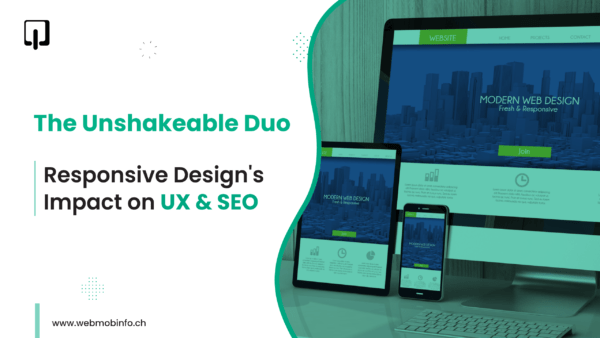Forget dialling a landline and rocking out to a tinny ringtone – the web’s moved on. Today, it’s all about thumbs scrolling on sleek screens; you guessed it right, Mobile. It’s not just a trend; it’s a takeover, with half of all website traffic hailing from these miniature marvels.
As per the survey, 92.3% of internet users browse the internet from their mobile phones rather than going to desktops. That’s a mind-boggling 4.32 billion of the global population connecting through smartphones. So, in today’s digital landscape, where screens of all shapes and sizes rule, ensuring a seamless experience across them is no longer a luxury but a necessity. This is where responsive design steps in, not simply as a cosmetic trend but as a powerful force shaping user experience (UX) and search engine optimisation (SEO).
Let’s delve into the multifaceted impact of responsive design, exploring its role in crafting visually pleasing websites and user-centric ones that thrive in the search engine arena.
UX Reimagined: A Symphony of Smooth Navigation and Content Consumption
Gone are the days of squinting at text or struggling to click buttons on a website designed for a larger screen. Responsive design brings harmony to the user’s journey, adapting layouts and content dynamically to fit any device. This translates to:
- Effortless Accessibility: Whether browsing on a smartphone, tablet, or desktop, you can engage with content seamlessly. Text remains readable, images adjust accordingly, and navigation elements stay finger-friendly. This inclusive approach caters to a wider audience pool, boosting engagement and conversions.
- Enhanced Readability and Interaction: Content takes centre stage, optimised for each screen size to maximise reader comfort. This minimises your need for scrolling and zooming, leading to smoother information consumption and deeper user immersion.
- Reduced Bounce Rates and Increased Engagement: Websites that frustrate users with awkward layouts and unusable elements inevitably experience high bounce rates. Responsive design eliminates these roadblocks, encouraging you to explore further, interact with content, and stay longer.
SEO Soars: Responsive Design as a Search Engine Ally
While crafting a delightful user experience is paramount, the SEO landscape recognises responsive design as a crucial ally.
Here’s how it unlocks the gates to higher search engine rankings:
- Mobile-First Indexing: Google, the search engine overlord, now prioritises mobile-friendly websites. With responsive design, you don’t need separate desktop and mobile versions – one codebase adapts to all devices, eliminating duplicate content issues and ensuring search engines always see the most relevant version of your website.
- Faster Loading Times: Responsive design often streamlines code and optimises assets for different screen sizes, leading to speedier website loading times. This is a significant SEO booster, as search engines favour websites that deliver information quickly and efficiently.
- Improved User Metrics: A positive user experience translates to improved metrics like lower bounce rates, higher time spent on site, and more page views. These signals tell search engines that your website is valuable and relevant, potentially bumping you up the rankings.
- Reduced Maintenance Costs: Maintaining multiple website versions is a resource-intensive endeavour. Responsive design simplifies site management, saving time and money while ensuring consistent branding and messaging across all devices.
Beyond the Basics: Optimising Your Responsive Design for Maximum Impact
While adopting a responsive approach is a step in the right direction, there are additional considerations for maximising its impact:
- Prioritise Content First: Responsive design shouldn’t compromise content quality. Ensure essential information and calls to action are readily accessible on all devices.
- Test Rigorously: Don’t assume one size fits all. Test your website across various devices and screen sizes to identify and address any usability issues.
- Keep Performance in Mind: Optimise images and code to ensure fast loading times, even on mobile networks.
- Embrace Responsive Images: Use flexible image containers and responsive image formats to ensure visuals adapt effortlessly to different screen sizes without compromising quality.
Responsive Design: An investment that pays off in Smiles and Search Engine Rank
In conclusion, responsive design isn’t just a technical checkbox; it’s a strategic investment in user experience and search engine optimisation. By prioritising smooth navigation, accessible content, and lightning-fast performance across all devices, you’ll delight your visitors and climb the search engine ladder, attracting and engaging a wider audience. So, embrace the responsive revolution and watch your website thrive in the ever-evolving digital landscape.
Nitin Gupta, the CEO of WebMob Software Solutions, is a visionary leader renowned for his innovative approaches to leveraging emerging technologies to transform businesses globally. Under Nitin's guidance, WebMob has evolved into a pioneer in fintech, catering to esteemed clients across Europe, APAC, and the Middle East. As a thought leader, he continues to drive WebMob towards new heights of success, cementing its reputation as an industry leader in the IT sector.

